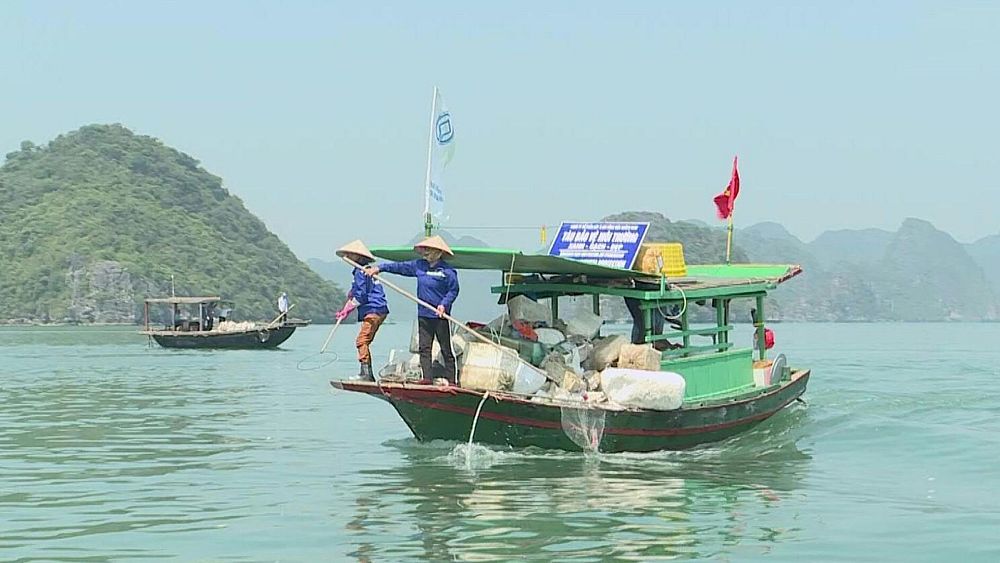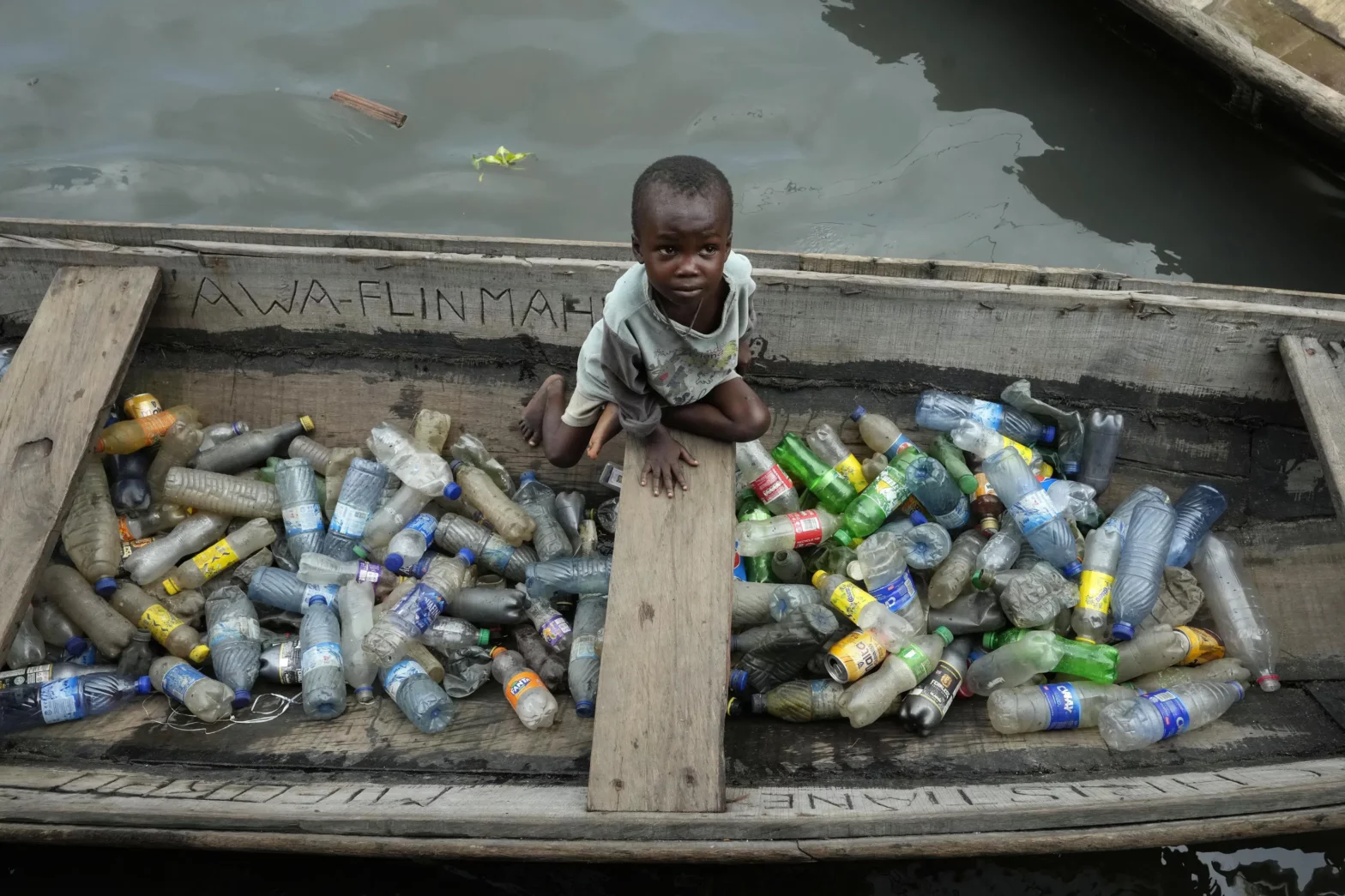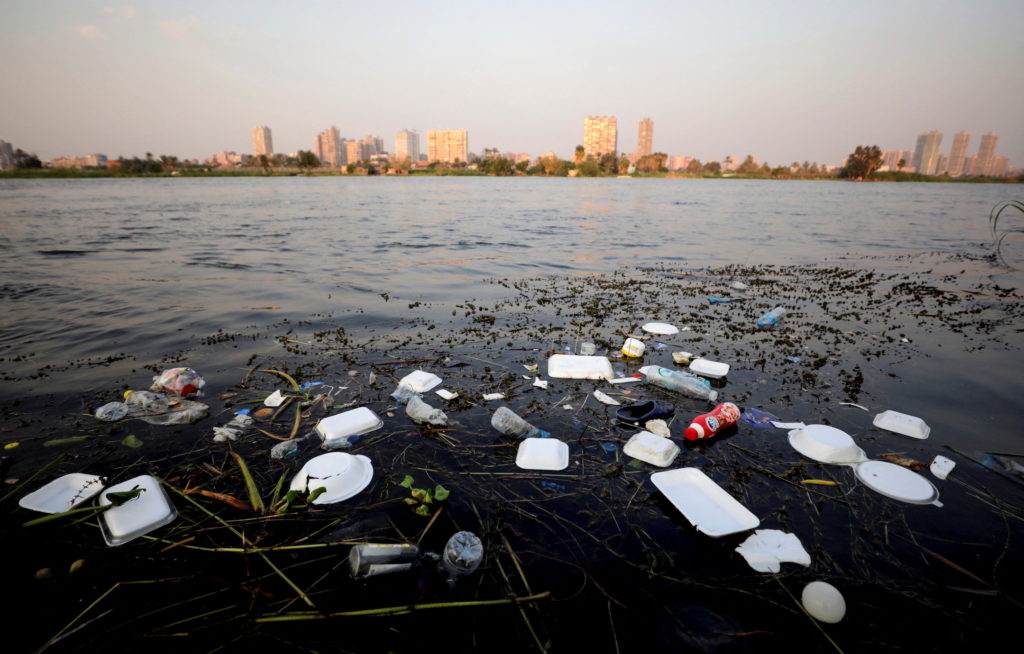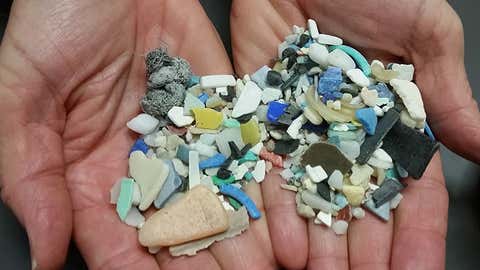By Will Atwater
Distance runners must develop two critical traits: mental toughness and the ability to focus on the big picture when obstacles such as fatigue set in. These are characteristics that runner and problem-solver Crystal Dreisbach has found valuable in her career tackling environmental issues.
Dreisbach is involved in a decade-long marathon to establish in Durham something called a circular economy, which would divert plastic and other waste from landfills and local waterways. She draws parallels between distance running and her environmental work.
“[If] I hit a wall at mile 18 or whatever,” she said, “I know from experience that I’m going to feel like I’m done … But if I just push through that wall, when I get to the other side, I’ll feel better. So it’s like the knowledge that if you overcome a challenge, it is better on the other side. Just keep going.”
The Environmental Protection Agency defines a circular economy as one that “keeps materials, products and services in circulation for as long as possible” to slow climate change. If fewer single-use materials, such as plastics, are produced, it lowers CO2 emission from fossil fuels used to make plastics, and it reduces emissions from plastic waste decomposition.
At this stage in the race, Dreisbach is garnering support for an ordinance that would reduce plastic waste in Durham by imposing a 10 cent fee per bag paid by retail customers needing bags for purchases. If established, Dreisbach believes the regulation will reduce the plastic waste polluting the environment — including on the land, in waterways and in the bodies of marine animals and people.
And she’s getting a boost from the federal government. On April 21, the Biden administration published a draft plan for reducing plastic waste at the source, cleaning up the recycling process and removing litter from the environment. The administration’s action signals that the federal government is ready to lead in addressing this environmental challenge.
Finding the money
Despite the daunting task she’s taken on, Dreisbach is willing to share her vision with anyone who’ll listen. She recently traveled to Washington, D.C., where she spoke to an engaged audience for an Earth Day event titled “From Single-use to Reuse: The Growing Reuse Movement.”
The World Wildlife Fund and Upstream, an organization that works with businesses and institutions to eliminate waste, organized the event. It was attended by more than 100 people, including representatives from federal agencies.
Crystal Dreisbach, founder of Don’t Waste Durham, talks with students about the benefits of a circular economy, including eliminating single-use plastic waste. Credit: Don’t Waste Durham
“This is the first time in my career [that] we put out our recycling strategy the same day that we got funding in the bipartisan infrastructure law,” said Nena Shaw, EPA acting director, resource conservation and sustainability division. “The president signed it, and we have support from industry and nonprofits and others that are all trying to work towards the same end.”
Dr. Priscilla Johnson, interim CEO at Upstream, says there’s an opportunity to reduce plastic waste and boost local economies by creating jobs and adopting a circular economy, which the federal government can support.
“I think funding is the biggest barrier,” she said, “so the federal government’s role in catalyzing private industries, like banks, to direct their funding to these types of efforts that solve systemic problems [is needed]. When you look at how plastic and plastics are manufactured, they have a deleterious upstream effect on the most vulnerable communities. And that happens throughout the entire world.”
Curbing waste is also on the minds of North Carolina lawmakers. In February, NC Health News reported on the NC Managing Waste Act of 2023. The bill, introduced by Rep. Harry Warren (R-Salisbury), seeks to reduce the amount of non-recyclable waste generated by state agencies.
A race we must win
Oceana, an organization that states its mission is to “protect the world’s oceans,” says it’s critical for humanity to address the global plastic pollution problem.
“Plastic is everywhere. It’s choking our oceans, melting out of Arctic sea ice, sitting at the deepest point of the seafloor, and raining onto our national parks,” reads a statement on the organization’s website. “It’s in the air we breathe, the water we drink, and the food we eat. It’s greatly contributing to the climate crisis and disproportionately polluting communities of color and low-income communities ….”
Oceana reports that roughly 33 billion pounds of plastic is deposited into the ocean annually. More than 14.5 million tons of plastic debris were dumped in landfills in 2018, according to the EPA, and a 2021 UN Environment Programme report states that the annual global cost associated with plastic pollution was $19 billion in 2018.
A 2019 study commissioned by the World Wildlife Fund found that humans digest roughly 5 grams, or a credit-card size amount, of microplastics weekly. While there is no consensus on whether there is a link between microplastic ingestion and human disease, research is underway. One study found that people with inflammatory bowel disease (IBD) had a higher quantity of microplastic particles in their feces than healthy people. Crohn’s disease and ulcerative colitis are two forms of IBD.
Plastic waste that is not recycled often ends up in landfills and releases greenhouse gases as it breaks down into smaller particles. Greenhouse gases trap heat in the atmosphere and contribute to global warming.
And due to the build-up of greenhouse gases in the atmosphere, it’s highly likely “that at least one of the next five years, and the five-year period as a whole, will be the warmest on record,” according to a recently released report by the World Meteorological Organization.
“This report does not mean that we will permanently exceed the 1.5°C level specified in the Paris Agreement, which refers to long-term warming over many years. However, WMO is sounding the alarm that we will breach the 1.5°C level on a temporary basis with increasing frequency,” said WMO Secretary-General Prof. Petteri Taalas.
A 2016 EPA climate indicator report states that people 65 and older, African Americans and children are more susceptible to heat-related illnesses and deaths than the general population.
‘Following the North Star’
Dreisbach says her training as a public health professional and her experience in the Peace Corps and working on international campaigns for international public health contractor FHI 360 gave her the skills that she now uses to take on Durham’s waste problem.
Crystal Dreisbach (second row, third from the right) stands with colleagues, including federal officials, for a group photo during the “From Single-use to Reuse: Earth Day Event,” held in Washington, DC, on April 21, 2023. Credit: Uptream
On her journey toward a circular economy, Dreisbach has endured pushback from critics and delays, including the changeover of mayors and council members along the way, reminding her to view this effort as a marathon, not a sprint.
“Ten years ago, everyone was laughing at me. But now they’re putting me in front of the White House, you know? So, clearly, I’ve been following the North Star.”
Dreisbach’s mission led her in 2013 to form Don’t Waste Durham, a nonprofit organization “that creates solutions that prevent trash,” according to its website.
During the past decade, initiatives developed by Don’t Waste Durham to eliminate waste include “Boomerang Bags” made by volunteers out of recycled T-shirts. The bags are free at checkout counters in participating retail shops. Customers who need a bag can borrow a bag to carry purchases home and return it later, or keep the bag to use for future purchases.
Another initiative established by Don’t Waste Durham is “Green-to-Go,” a fee-for-service program available in selected restaurants and retail outlets that offers customers the option of replacing single-use food containers with reusable containers to transport food home. Once the customer finishes using the container, it is collected and brought to a washing center, sterilized and returned to the restaurant.
Don’t Waste Durham is also working with the Durham Public Schools, and other city and county agencies, on environmental efforts such as improving education around recycling and replacing disposable food containers with reusable stainless foodware, among other initiatives.
Hard-earned recognition
Dreisbach’s work is not going unnoticed. In 2021, she was recognized as the “Activist of the Year” during the National Reuse Awards, held virtually and sponsored by Upstream and Closed Loop Partners, a circular economy-focused investment firm and innovation center, according to a release.
“Never has recognition of heroes in the reuse movement been more crucial as we experience the multiple effects of climate change and plastic pollution in the air, on land and in our oceans,” said Matt Prindiville, former CEO at Upstream. “The recipients of The Reusies are true trailblazers and game-changing innovators of the growing reuse economy.”
Dreisbach’s work is also receiving support from local colleagues.
Sign up for our Newsletter
.gform_body,.gform_footer{transition: opacity 200ms;}.amp-form-submitting .gform_body,.amp-form-submitting .gform_footer{opacity: 0.5;}.amp-form-submit-success .gform_body,.amp-form-submit-success .gform_footer{display: none !important;}
“She doesn’t see boundaries, she sees hurdles that need to be overcome,” said Tobin Freid, Durham County sustainability officer. “And she goes after [hurdles] tenaciously. If that doesn’t work, she pivots to find another way around it.”
In 2019, Don’t Waste Durham became a client of the Duke Environmental Law and Policy Clinic, where the organization worked with law students and staff to draft policy that supports a reuse economy such as the proposed plastic bag ordinance.
“I wish there were 100 Crystals doing what Crystal is doing in Durham,” said Nancy Lauer, staff scientist and lecturing fellow at the law clinic. “Her vision is where we need to be going.”
Michelle Nowlin, co-director of the Duke Environmental Law and Policy Clinic, agrees with Lauer’s take on Dreisbach.
“Crystal has tremendous passion and vision for more environmentally sustainable ways of structuring our society and our economy.”
Running uphill
Dreisbach says the next leg in Don’t Waste Durham’s journey toward establishing a circular economy is to get the city council to vote on the proposed 10-cent-per-bag ordinance. However, there’s a significant barrier to overcome before a vote happens.
Credit: NC DEQ
City officials have said that they’re only willing to vote on the proposed ordinance if the upcoming budget includes line items for an educational outreach coordinator and a code enforcement officer, according to Dreisbach.
Allegedly, the city manager is only willing to have the two positions in a proposed budget with the policy in place.
“So we’re like in this chicken-and-egg situation,” Dreisbach said. “[The city manager] won’t recommend the two positions unless the policy has passed.”
Don’t Waste Durham and its supporters are working diligently to address council members’ concerns before June 20, when the vote for the upcoming budget is expected.
Shaw acknowledges that establishing a coalition of stakeholders to eliminate single-use plastic waste can be a challenging, but worthwhile endeavor.
“We don’t all agree on everything, but at the same time, the momentum is there,” Shaw said. ”There’s a huge desire on the part of the young people, certainly of today, pushing us in that direction because they’re not satisfied with the status quo — and they shouldn’t be.”
Republish This StoryRepublish our articles for free, online or in print, under a Creative Commons license.








